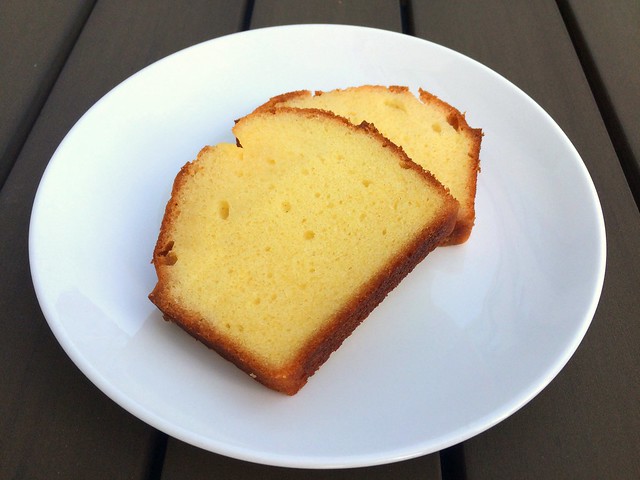
Hi, I am back. It's been quite a while since I last posted. Umami Mart has been crazy for Kayoko and Yoko, and I've been creating recipes non-stop and teaching cooking classes which has been occupying most of my time.
However, having heard the great news that Umami Mart is selling sake and beer, I couldn't help but to congratulate them both by contributing a post about sake, namely, a sake cake recipe! Oh, and I promise I will write at least once a month from now on.
Anyhow, about sake, I am not going into details here of flavors differences, etc. I am sure there are plenty of
posts, or articles you can Google, so my article is how to use sake in cooking and baking.
Though I said I wouldn't get into details of sake, I have to explain certain sake grades.
First of all, cooking sake can be found at any Japanese grocery store, probably on the bottom shelf.

All the bottles look pretty similar, so it may be confusing: the left side of middle shelf is mirin and glass bottles are usually rice vinegar. The left side of the bottom shelf in glass bottles are mirin, then plastic bottles of mirin, then finally plastic bottles of cooking sake. Colors and packagings are pretty similar, so look for kanji character of 酒.
There are also various brands of cooking sake you can get, and which to choose is up to you. Prices vary from $7-$12. The more expensive, the better? Probably, but the cheap stuff will suffice.

Here are the more expensive, premium sakes. The boxed sakes are also good for cooking.
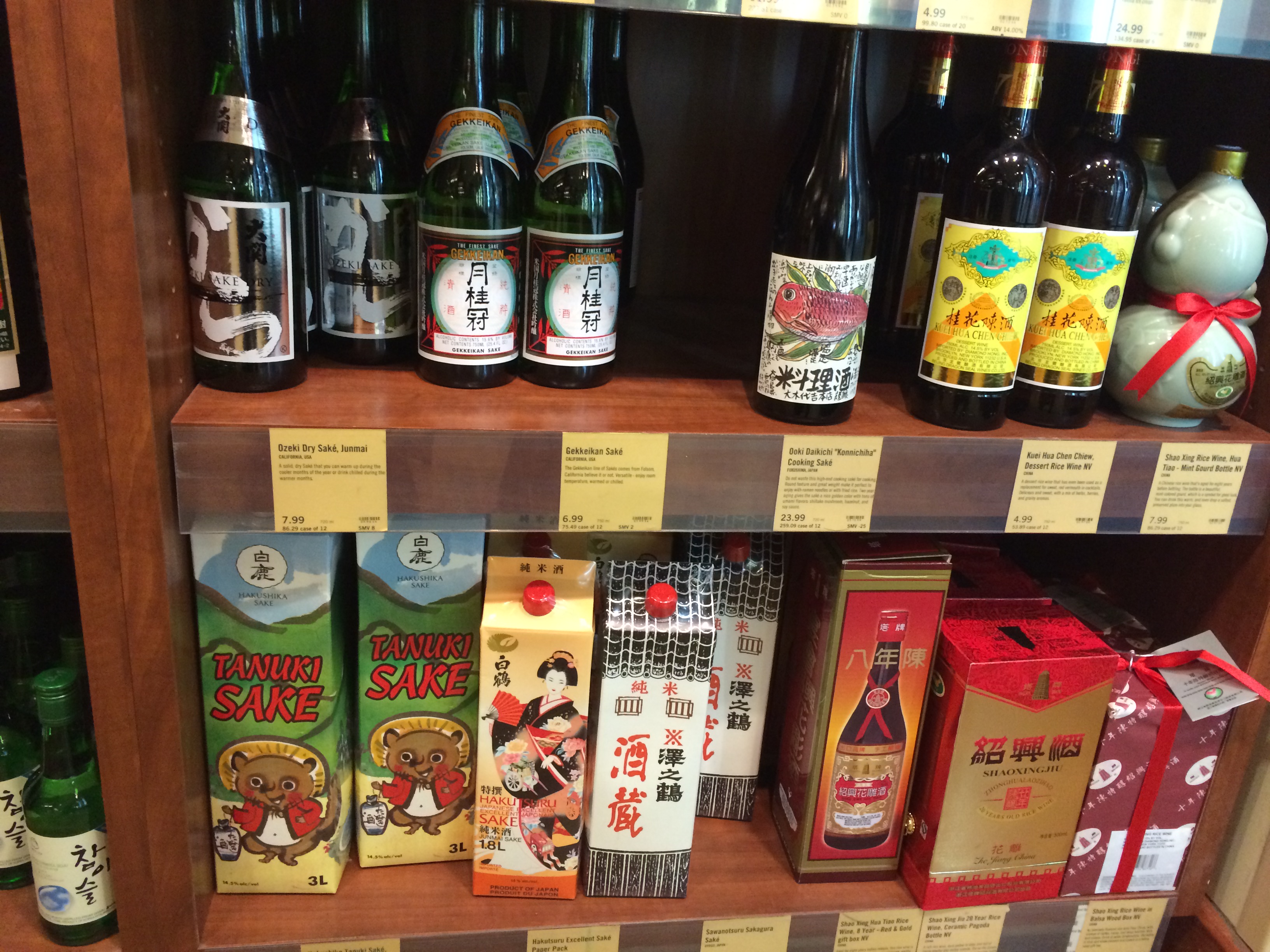
These three bottles of sake are pretty good representation of what you should look for when you want to use sake for cooking.

Left is cooking sake, as you saw above on the bottom shelf of the grocery store. It's not for drinking.
Middle is Gekkeikan sake, which is brewed in California, drinkable, but pretty much the bottom-of-the-barrel. (Remember god awful Boones? I think it's in the same category of cheap, but it does the job of getting drunk).
Right is Amabuki Junmai Ginjo, a premium sake made with sunflower yeast (a detailed explanation should be available at Umami Mart). Nice and smooth with a hint of a floral aftertaste. It's a very good Junmai Ginjo sake. When in doubt, go with Junmai Ginjo, you won't be sorry -- a line I took from sake expert John Gauntner.
Differences between cooking sake and regular sake? Alcohol regulation. Every country has pretty strict laws and regulations on booze, and Japan is definitely no exception. An easy explanation would be that cooking sake is cheaply made sake, and added about 3% of salt at the end so it's not drinkable (so that it would not be mistaken as an alcoholic beverage). Try to drink cooking sake -- even the worst alcoholic wouldn't enjoy it. It tastes like salty sake, and quite disgusting.
Gekkeikan and cooking sake are about the same price (~$7ish), and at least Gekkeikan is made for drinking, so you can definitely substitute any cooking using cheap sake, instead of cooking sake. You can also use good sake for cooking or baking, but given the price (thanks to FDA), it's not ideal to use a vast amount of good sake for non-drinking purposes.
What do you use sake when cooking? Similar to using wine, it adds flavors and depth to your dishes, tenderizes meats, and gets rid of fishiness in seafood. So it's a pretty good thing to have in your fridge.

I keep some sake in a spray bottle (Muji sells a food-safe spray bottle, which is this one) and spray on top of fish for even coating. No need to use the spray to marinate thin sliced meat.
Since MOTOism is all about staying one step above ordinary cooking, here is an innovative use for sake. It's basically a super moist sake-flavored pound cake. For this recipe I used premium sake, but you can try using cheaper sake (Gekkeikan style). But don't use cooking sake for this recipe.
SAKAKE
Pronounced
sa-kei-ki aka Sake Cake
INGREDIENTS
200 gram flour (if you prefer very fluffy cake, use cake flour, otherwise all-purpose flour will do)
200 gram butter
150 gram sugar
4 eggs
1/3 cup sake (don't use cooking sake)
1 teaspoon baking powder
For the sake syrup
2/3 cup sake (don't use cooking sake)
50 gram sugar
1. Mix room temperature butter and sugar together with a hand mixer:


2. Add egg one at a time and mix well:

3. Add sake to the batter:

4. Fold in sifted flour and baking powder mix:
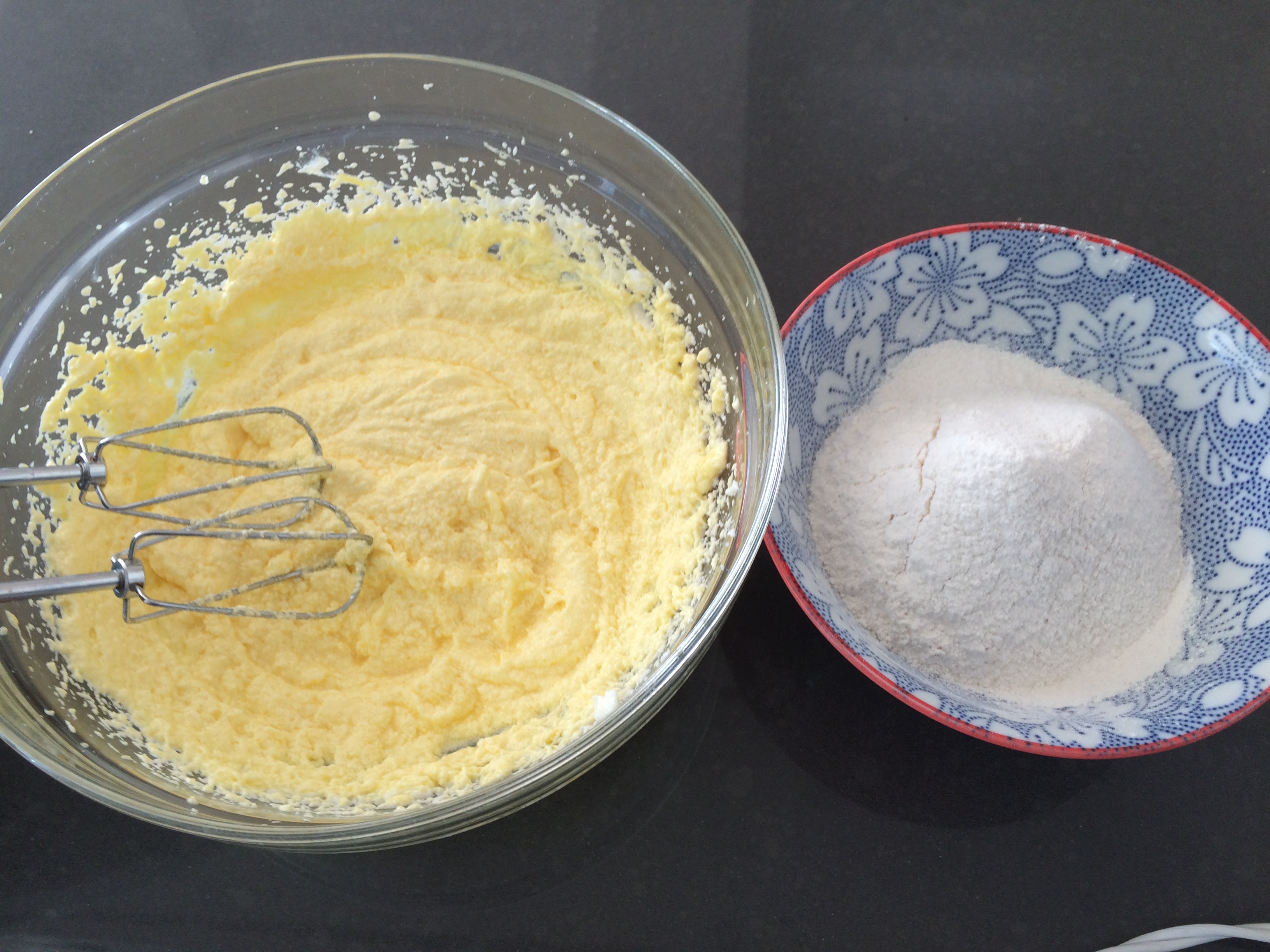
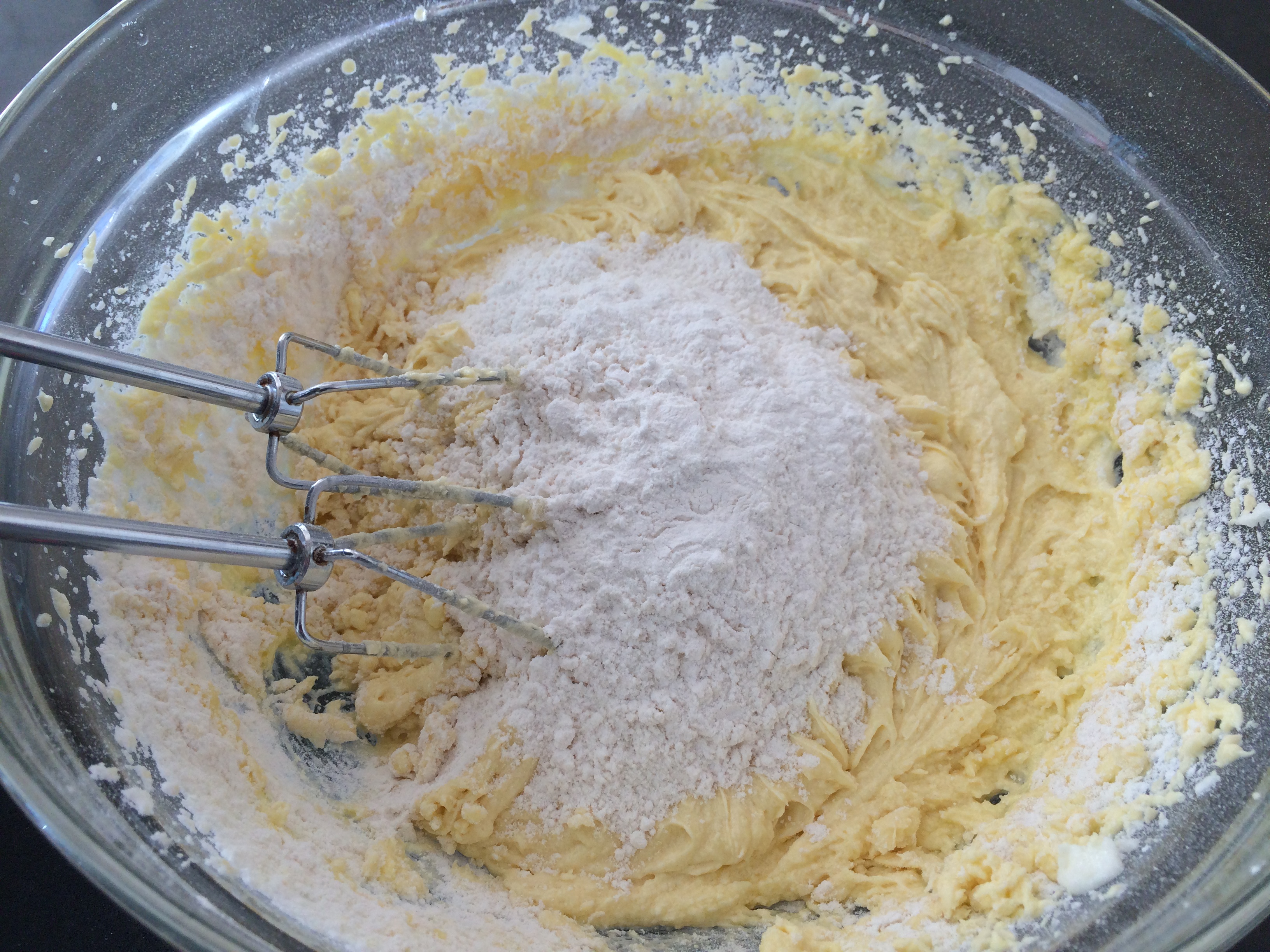
5. Mix everything well, then pour the batter into a pound mold:
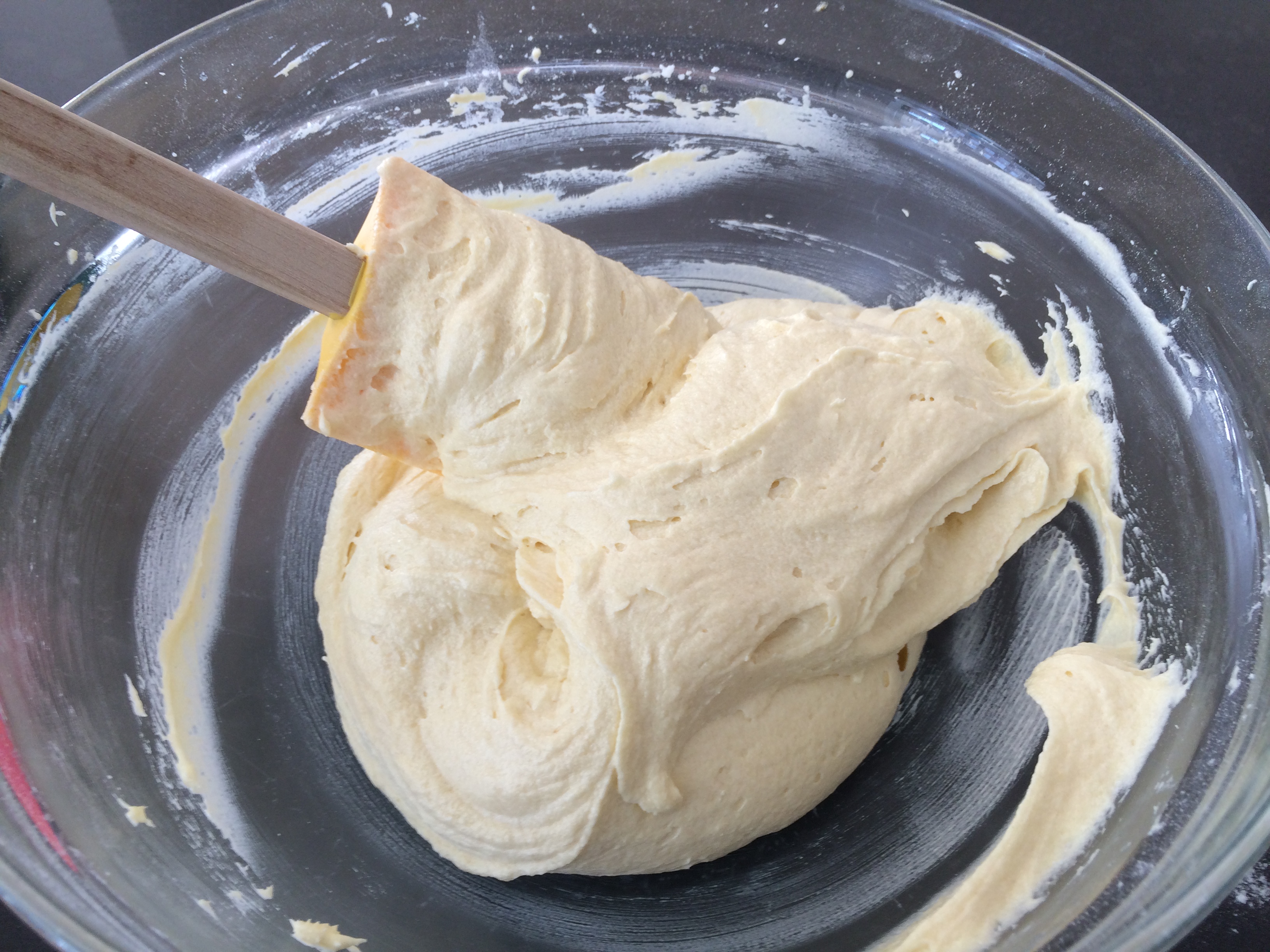
6. Bake at 375˚F for 45-50 minutes, until done:
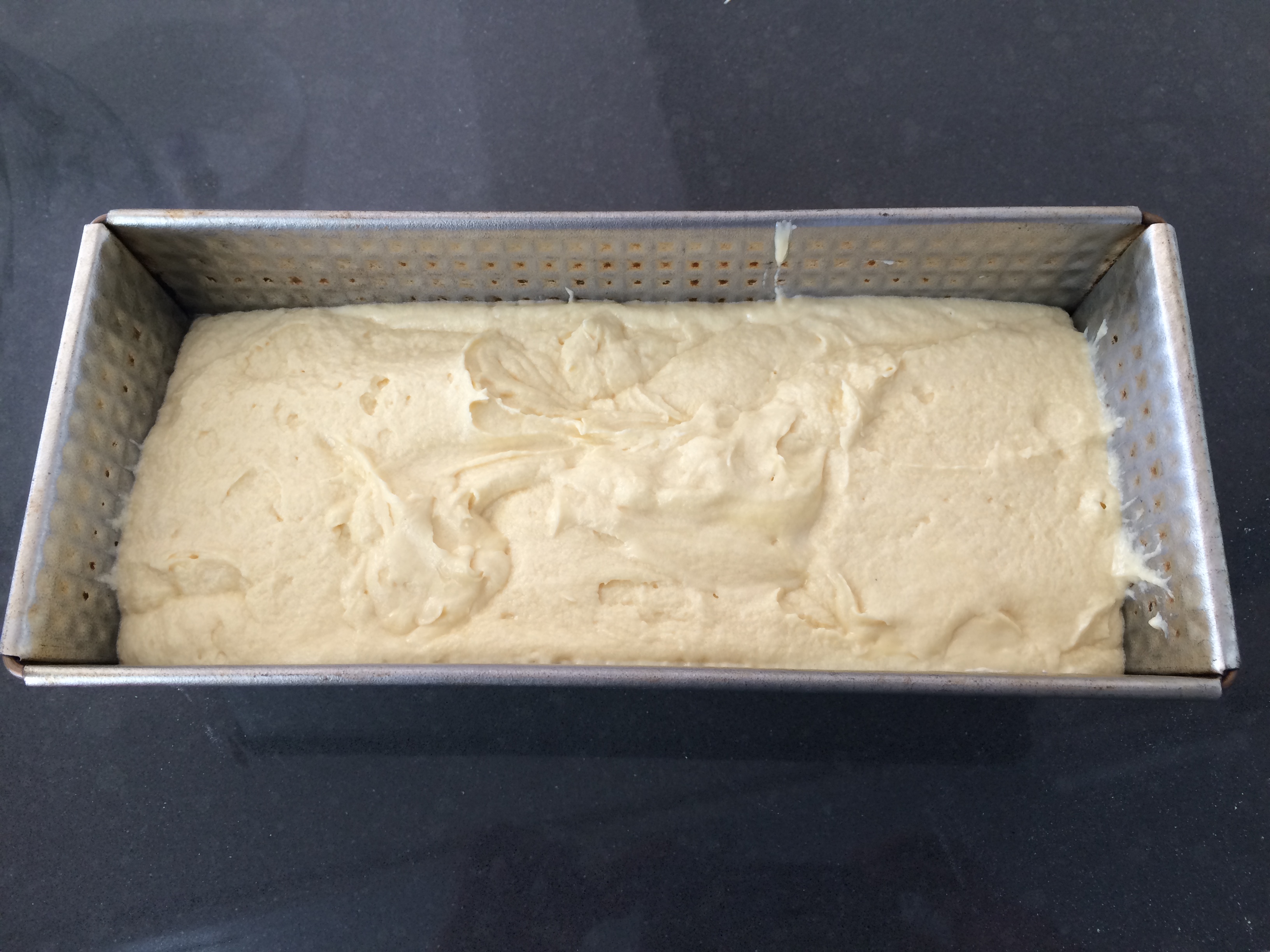
7. While the cake is in the oven, make the sake syrup:
Mix 1/3 cup of sake and sugar, with low heat dissolve sugar. If you shake the pan, the sugar melts quicker. Once all the sugar is melted, take it off the heat then add another 1/3 cup of sake (you don't want to cook sake too long since it will lose alcohol/flavor).
After about 45 minutes, the cake should have risen and look golden.
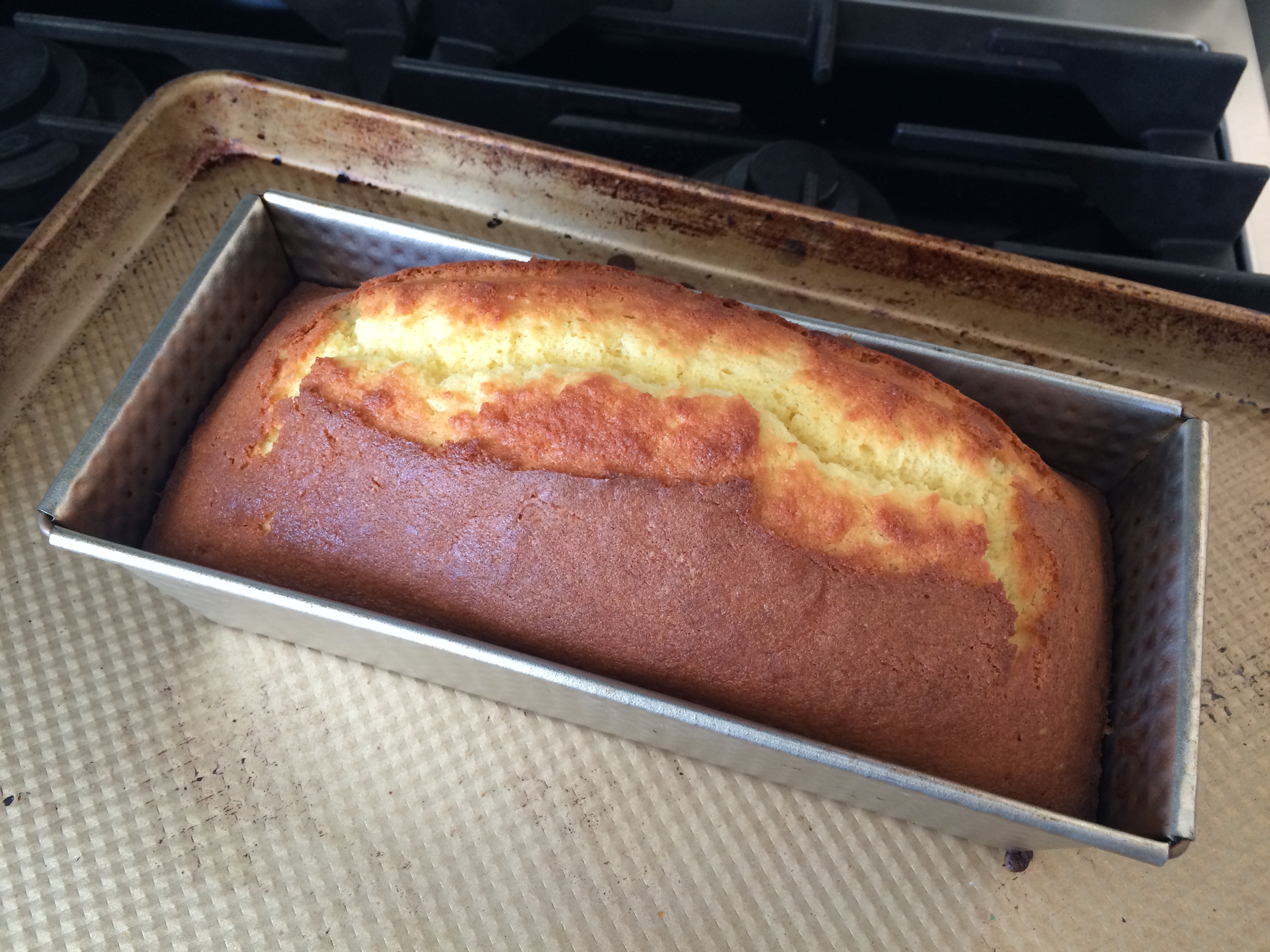
Since sake in the batter is pretty well cooked, you don't smell too much of the sake at this point.
8. Brush the syrup evenly all over the cake.

Take it out of the mold once it's cooled (if you try to take it out of the mold while it's still warm, it will break).
9. Wrap it with plastic wrap and let it rest for at least half a day. The final product is super moist and sake filled!
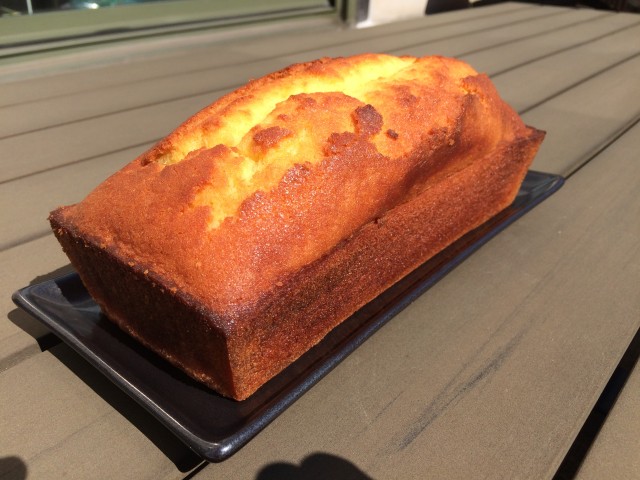
Don't drive after you eat this cake. Since half the sake syrup is unheated sake, you will definitely feel it after eating a slice.

This cake is good as-is. No whipped cream necessary.
 Hi, I am back. It's been quite a while since I last posted. Umami Mart has been crazy for Kayoko and Yoko, and I've been creating recipes non-stop and teaching cooking classes which has been occupying most of my time.
However, having heard the great news that Umami Mart is selling sake and beer, I couldn't help but to congratulate them both by contributing a post about sake, namely, a sake cake recipe! Oh, and I promise I will write at least once a month from now on.
Anyhow, about sake, I am not going into details here of flavors differences, etc. I am sure there are plenty of posts, or articles you can Google, so my article is how to use sake in cooking and baking.
Though I said I wouldn't get into details of sake, I have to explain certain sake grades.
First of all, cooking sake can be found at any Japanese grocery store, probably on the bottom shelf.
Hi, I am back. It's been quite a while since I last posted. Umami Mart has been crazy for Kayoko and Yoko, and I've been creating recipes non-stop and teaching cooking classes which has been occupying most of my time.
However, having heard the great news that Umami Mart is selling sake and beer, I couldn't help but to congratulate them both by contributing a post about sake, namely, a sake cake recipe! Oh, and I promise I will write at least once a month from now on.
Anyhow, about sake, I am not going into details here of flavors differences, etc. I am sure there are plenty of posts, or articles you can Google, so my article is how to use sake in cooking and baking.
Though I said I wouldn't get into details of sake, I have to explain certain sake grades.
First of all, cooking sake can be found at any Japanese grocery store, probably on the bottom shelf.
 All the bottles look pretty similar, so it may be confusing: the left side of middle shelf is mirin and glass bottles are usually rice vinegar. The left side of the bottom shelf in glass bottles are mirin, then plastic bottles of mirin, then finally plastic bottles of cooking sake. Colors and packagings are pretty similar, so look for kanji character of 酒.
There are also various brands of cooking sake you can get, and which to choose is up to you. Prices vary from $7-$12. The more expensive, the better? Probably, but the cheap stuff will suffice.
All the bottles look pretty similar, so it may be confusing: the left side of middle shelf is mirin and glass bottles are usually rice vinegar. The left side of the bottom shelf in glass bottles are mirin, then plastic bottles of mirin, then finally plastic bottles of cooking sake. Colors and packagings are pretty similar, so look for kanji character of 酒.
There are also various brands of cooking sake you can get, and which to choose is up to you. Prices vary from $7-$12. The more expensive, the better? Probably, but the cheap stuff will suffice.
 Here are the more expensive, premium sakes. The boxed sakes are also good for cooking.
Here are the more expensive, premium sakes. The boxed sakes are also good for cooking.
 These three bottles of sake are pretty good representation of what you should look for when you want to use sake for cooking.
These three bottles of sake are pretty good representation of what you should look for when you want to use sake for cooking.
 Left is cooking sake, as you saw above on the bottom shelf of the grocery store. It's not for drinking.
Middle is Gekkeikan sake, which is brewed in California, drinkable, but pretty much the bottom-of-the-barrel. (Remember god awful Boones? I think it's in the same category of cheap, but it does the job of getting drunk).
Right is Amabuki Junmai Ginjo, a premium sake made with sunflower yeast (a detailed explanation should be available at Umami Mart). Nice and smooth with a hint of a floral aftertaste. It's a very good Junmai Ginjo sake. When in doubt, go with Junmai Ginjo, you won't be sorry -- a line I took from sake expert John Gauntner.
Differences between cooking sake and regular sake? Alcohol regulation. Every country has pretty strict laws and regulations on booze, and Japan is definitely no exception. An easy explanation would be that cooking sake is cheaply made sake, and added about 3% of salt at the end so it's not drinkable (so that it would not be mistaken as an alcoholic beverage). Try to drink cooking sake -- even the worst alcoholic wouldn't enjoy it. It tastes like salty sake, and quite disgusting.
Gekkeikan and cooking sake are about the same price (~$7ish), and at least Gekkeikan is made for drinking, so you can definitely substitute any cooking using cheap sake, instead of cooking sake. You can also use good sake for cooking or baking, but given the price (thanks to FDA), it's not ideal to use a vast amount of good sake for non-drinking purposes.
What do you use sake when cooking? Similar to using wine, it adds flavors and depth to your dishes, tenderizes meats, and gets rid of fishiness in seafood. So it's a pretty good thing to have in your fridge.
Left is cooking sake, as you saw above on the bottom shelf of the grocery store. It's not for drinking.
Middle is Gekkeikan sake, which is brewed in California, drinkable, but pretty much the bottom-of-the-barrel. (Remember god awful Boones? I think it's in the same category of cheap, but it does the job of getting drunk).
Right is Amabuki Junmai Ginjo, a premium sake made with sunflower yeast (a detailed explanation should be available at Umami Mart). Nice and smooth with a hint of a floral aftertaste. It's a very good Junmai Ginjo sake. When in doubt, go with Junmai Ginjo, you won't be sorry -- a line I took from sake expert John Gauntner.
Differences between cooking sake and regular sake? Alcohol regulation. Every country has pretty strict laws and regulations on booze, and Japan is definitely no exception. An easy explanation would be that cooking sake is cheaply made sake, and added about 3% of salt at the end so it's not drinkable (so that it would not be mistaken as an alcoholic beverage). Try to drink cooking sake -- even the worst alcoholic wouldn't enjoy it. It tastes like salty sake, and quite disgusting.
Gekkeikan and cooking sake are about the same price (~$7ish), and at least Gekkeikan is made for drinking, so you can definitely substitute any cooking using cheap sake, instead of cooking sake. You can also use good sake for cooking or baking, but given the price (thanks to FDA), it's not ideal to use a vast amount of good sake for non-drinking purposes.
What do you use sake when cooking? Similar to using wine, it adds flavors and depth to your dishes, tenderizes meats, and gets rid of fishiness in seafood. So it's a pretty good thing to have in your fridge.
 I keep some sake in a spray bottle (Muji sells a food-safe spray bottle, which is this one) and spray on top of fish for even coating. No need to use the spray to marinate thin sliced meat.
Since MOTOism is all about staying one step above ordinary cooking, here is an innovative use for sake. It's basically a super moist sake-flavored pound cake. For this recipe I used premium sake, but you can try using cheaper sake (Gekkeikan style). But don't use cooking sake for this recipe.
SAKAKE
Pronounced sa-kei-ki aka Sake Cake
INGREDIENTS
200 gram flour (if you prefer very fluffy cake, use cake flour, otherwise all-purpose flour will do)
200 gram butter
150 gram sugar
4 eggs
1/3 cup sake (don't use cooking sake)
1 teaspoon baking powder
For the sake syrup
2/3 cup sake (don't use cooking sake)
50 gram sugar
1. Mix room temperature butter and sugar together with a hand mixer:
I keep some sake in a spray bottle (Muji sells a food-safe spray bottle, which is this one) and spray on top of fish for even coating. No need to use the spray to marinate thin sliced meat.
Since MOTOism is all about staying one step above ordinary cooking, here is an innovative use for sake. It's basically a super moist sake-flavored pound cake. For this recipe I used premium sake, but you can try using cheaper sake (Gekkeikan style). But don't use cooking sake for this recipe.
SAKAKE
Pronounced sa-kei-ki aka Sake Cake
INGREDIENTS
200 gram flour (if you prefer very fluffy cake, use cake flour, otherwise all-purpose flour will do)
200 gram butter
150 gram sugar
4 eggs
1/3 cup sake (don't use cooking sake)
1 teaspoon baking powder
For the sake syrup
2/3 cup sake (don't use cooking sake)
50 gram sugar
1. Mix room temperature butter and sugar together with a hand mixer:

 2. Add egg one at a time and mix well:
2. Add egg one at a time and mix well:
 3. Add sake to the batter:
3. Add sake to the batter:
 4. Fold in sifted flour and baking powder mix:
4. Fold in sifted flour and baking powder mix:

 5. Mix everything well, then pour the batter into a pound mold:
5. Mix everything well, then pour the batter into a pound mold:
 6. Bake at 375˚F for 45-50 minutes, until done:
6. Bake at 375˚F for 45-50 minutes, until done:
 7. While the cake is in the oven, make the sake syrup:
Mix 1/3 cup of sake and sugar, with low heat dissolve sugar. If you shake the pan, the sugar melts quicker. Once all the sugar is melted, take it off the heat then add another 1/3 cup of sake (you don't want to cook sake too long since it will lose alcohol/flavor).
After about 45 minutes, the cake should have risen and look golden.
7. While the cake is in the oven, make the sake syrup:
Mix 1/3 cup of sake and sugar, with low heat dissolve sugar. If you shake the pan, the sugar melts quicker. Once all the sugar is melted, take it off the heat then add another 1/3 cup of sake (you don't want to cook sake too long since it will lose alcohol/flavor).
After about 45 minutes, the cake should have risen and look golden.
 Since sake in the batter is pretty well cooked, you don't smell too much of the sake at this point.
8. Brush the syrup evenly all over the cake.
Since sake in the batter is pretty well cooked, you don't smell too much of the sake at this point.
8. Brush the syrup evenly all over the cake.
 Take it out of the mold once it's cooled (if you try to take it out of the mold while it's still warm, it will break).
9. Wrap it with plastic wrap and let it rest for at least half a day. The final product is super moist and sake filled!
Take it out of the mold once it's cooled (if you try to take it out of the mold while it's still warm, it will break).
9. Wrap it with plastic wrap and let it rest for at least half a day. The final product is super moist and sake filled!
 Don't drive after you eat this cake. Since half the sake syrup is unheated sake, you will definitely feel it after eating a slice.
Don't drive after you eat this cake. Since half the sake syrup is unheated sake, you will definitely feel it after eating a slice.
 This cake is good as-is. No whipped cream necessary.
This cake is good as-is. No whipped cream necessary.




Comments (3)
I made this recipe using a very thick/chewy nigori sake that was very good but too difficult to drink. It turned out delicious!
Welcome back MOTO! So much good info here. The sakake looks perf.
It seems delicious!!!